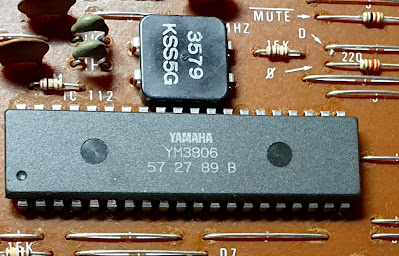Digging into YM3806

In the previous post I got the PSR-70 original firmware modified so that it dumps to serial port all register writes done to OPQ chip (YM3806). Now I’m getting the data I wanted and plenty of it! A simple keyboard key-down or key-up produce only under 20 register writes but changing sound from the front panel results in about 300 writes. Why 300, there are only 256 registers? Yes, but there are many registers which are written several times. T he raw dumps from the modified firmware are quite hard to read, they just list the register address and written value in hex in the order they happened: 1F=20 5E=1F 56=1F 4E=20 46=20 5E=81 56=81 4E=81 46=81 9E=1F … To make some sense out of this I wrote a small python script to analyze the dump. It lists all registers in numerical order and all writes done to that register. In the script output the first column is OPQ register number, second column is the number of writes to that register and then a list of the written values....


